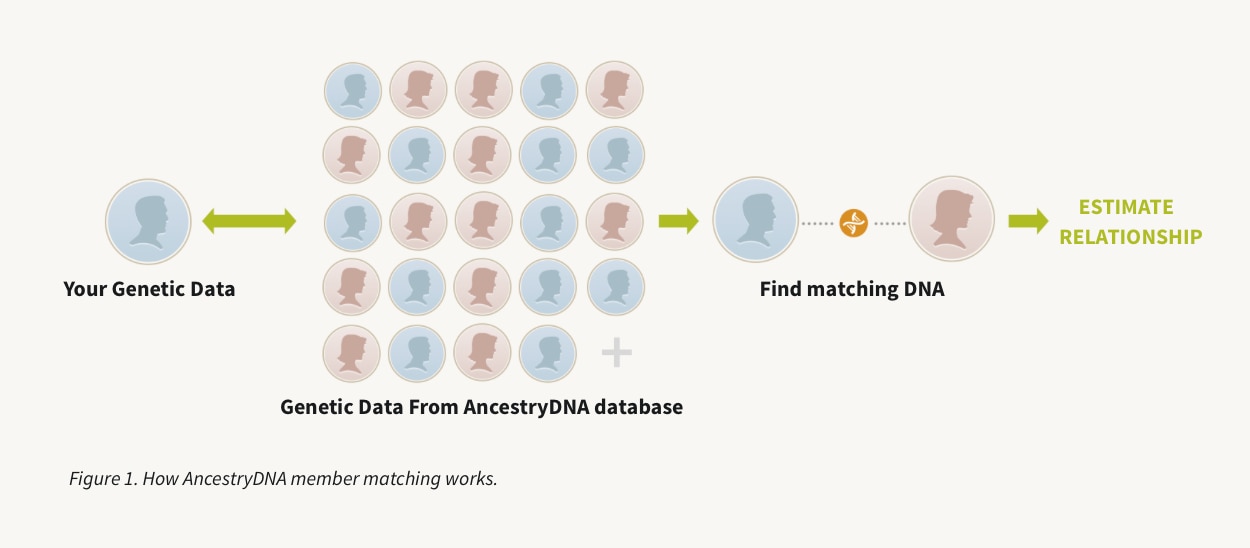DNA Match Explainer
When you take an AncestryDNA® test, you can opt in to receive AncestryDNA Matches—a list of other people who have taken an AncestryDNA test, opted in, and are likely to be related to you based on your DNA.
To determine your AncestryDNA Matches, Ancestry® compares your DNA to the DNA of every other person in the AncestryDNA database. Based on how your DNA matches up, Ancestry estimates how closely you’re related—or if you’re related at all (see Figure 1).
 And if you’ve opted in to AncestryDNA Matching, you’ll both be able to see your matches and be displayed as a match to others in the database who are related to you.
And if you’ve opted in to AncestryDNA Matching, you’ll both be able to see your matches and be displayed as a match to others in the database who are related to you.
Your DNA Matches
Your AncestryDNA Matches appear in different categories based on the predicted relationship you have with those matches. These categories include Parent/Child, Immediate Family, Close Family, and various degrees of cousinship, listed in possible ranges: first to second cousins, second to third cousins, and so forth. The closer the relationship is, the higher the match is displayed on your AncestryDNA match list.
AncestryDNA Match Categories
The following are the match categories you may find:
- Parent/Child
Here is where you will find a parent or a child. If the DNA match is your parent, the match will be specified as your mother or your father.
- Immediate Family
Immediate family are your full siblings, grandparents, or grandchildren. On rare instances you might find a half-sibling here.
- Close Family
Your AncestryDNA close family matches could include an aunt or an uncle, a niece or a nephew, a great-grandparent or a great-grandchild, a half-sibling, or a double-first cousin. Someone who appears in this category is rarely a first cousin.
- First Cousins (Possible Range 1st-2nd Cousin)
DNA matches who are a first cousin share a match with one of your grandparents. Besides first cousins, the matches in this category can be aunts and uncles, great-aunts and great-uncles, great-nieces and great-nephews, and so forth.
- Second, Third, and Fourth Cousins
These AncestryDNA cousin matches are more distant relatives. Examples include not only second or third cousins but also first cousins twice removed, second cousins once removed, and second cousins twice removed. To learn more about match categories, visit the DNA Match Categories page on the Ancestry site.
Shared Matches
As you investigate your matches, you can find DNA matches that you and a match have in common by clicking the Shared Matches tab. You can also review the public family trees created by your shared matches, which may contain shared last names, places, and people within the same group. From here, you can find how your matches relate to each other.
Opting Out of DNA Matches
During the registration of your AncestryDNA test kit, you can choose not to be viewable as a match to your AncestryDNA Matches. You can change your preference at any time from your “DNA Settings” page.